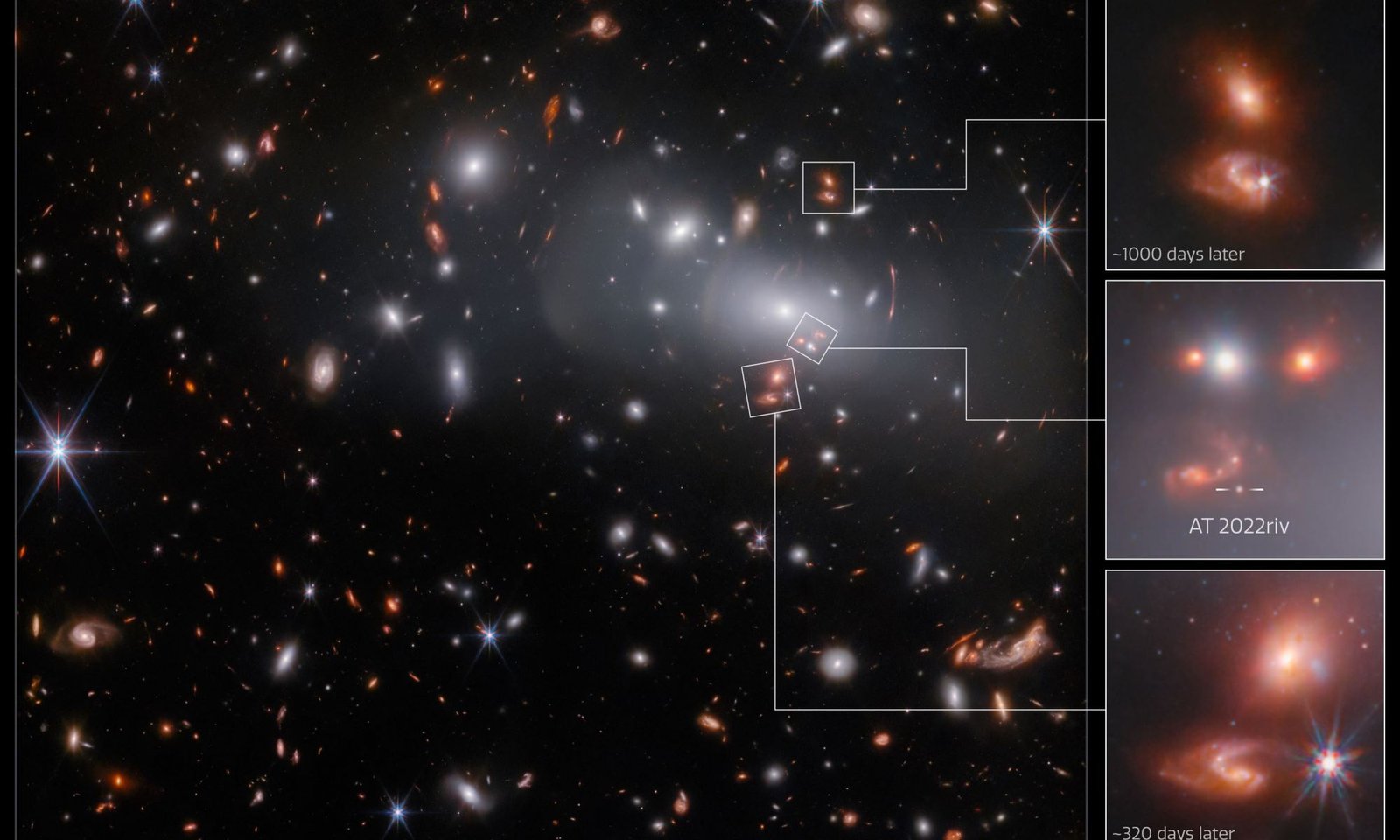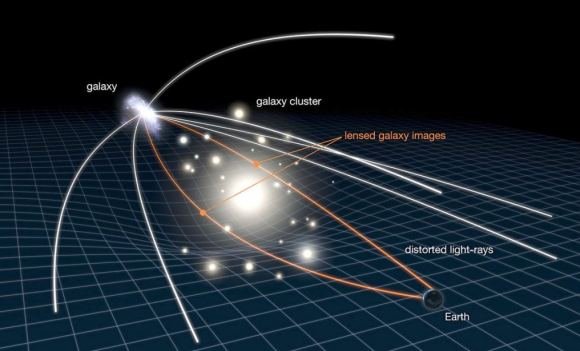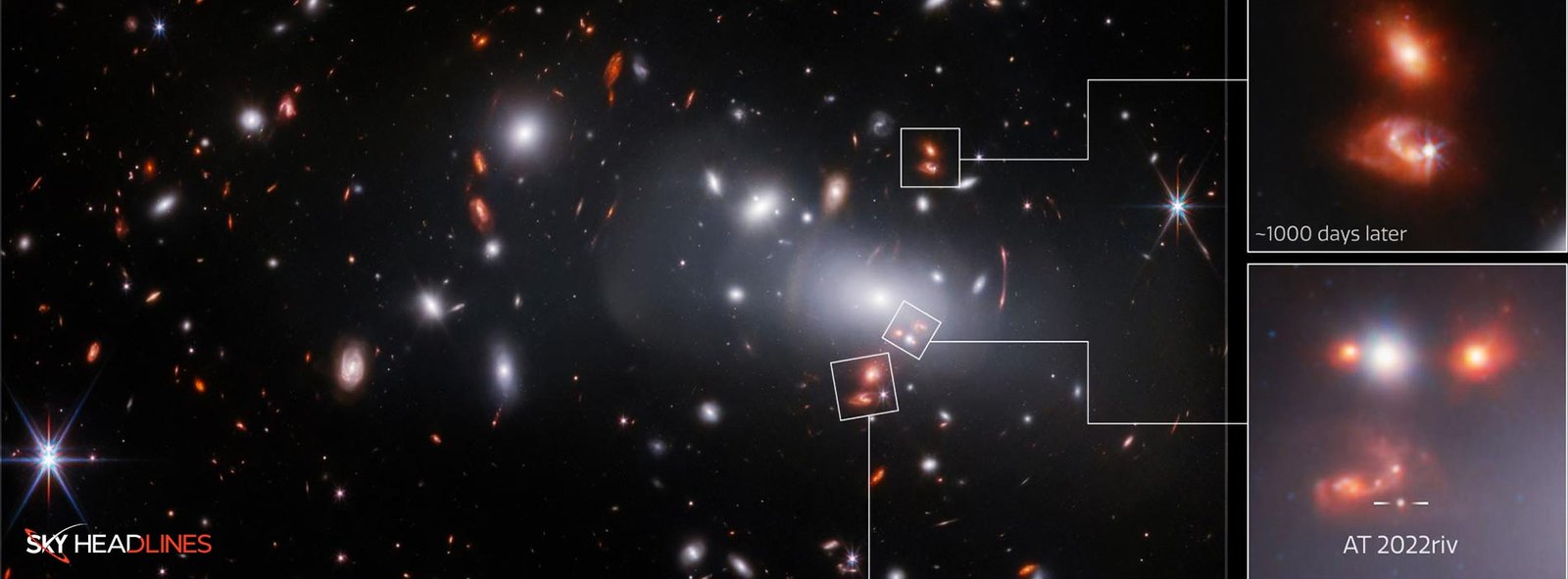On February 28, 2023, the James Webb Space Telescope (JWST) mission tweeted about its latest observation Gravitational Lens of a galaxy, which included three separate photos. The JWST’s capacity to capture such breathtaking imagery continuously amazes and captivates both scientists and space enthusiasts.

How does the JWST take three photographs of the same object at the same time?
This is done through gravitational lensing, when a large celestial body bends or twists light. This happens most often around stars like our Sun, but it can also occur around extremely distant, enormous galaxies. The gravitational lens of RX J2129 bends and splits light from a supernova-hosting galaxy into three pictures.
As a result of the galaxy cluster RX J2129 distorting and bending its light, a supernova-containing galaxy appears in three distinct images. About 3,2 billion light-years from Earth is where you’ll find this cluster of galaxies. Because light had to travel different distances to generate each image, astronomers have determined that the images all seem different because of their different ages and characteristics.
Type IA supernova!
Astronomers say that the earliest photograph of the potential supernova, AT 2002riv is a Type IA supernova. Two similar lines on either side of it provide supporting evidence for this claim. When we took another picture of the faraway galaxy 320 and 1000 days later, we found that the supernova was no longer visible. The brightness of type IA supernovae is useful for determining huge cosmic distances.
The European Space Agency explains: “The almost uniform luminosity of a Type IA supernova could also allow astronomers to understand how strongly the galaxy cluster RX J2129 is magnifying background objects, and therefore how massive the galaxy cluster is,” It continues: “As well as distorting the images of background objects, gravitational lenses can cause distant objects to appear much brighter than they would otherwise. If the gravitational lens magnifies something with a known brightness, such as a Type IA supernova, then astronomers can use this to measure the ‘prescription’ of the gravitational lens.”

Gravitational lensing!
Gravitational lensing is when a massive celestial body’s gravitational force causes distant object’s light to appear bent or distorted from a specific angle. This creates a cosmic lens that enables astronomers to see objects located behind the massive object. As it passed through RX J2129. the light from a galaxy with a supernova bent and split into three images.
In 1979, gravitational lensing split light from a distant object, proving Einstein’s general relativity theory. Gravitational microlensing finds exoplanets, while this effect studies supernovae. In 1979, the JWST captured two quasars that had been gravitationally lensed. JWST’s gravitational lensing will reveal how many supernovae and other insights it finds. This justifies the persistence of scientific investigation.





